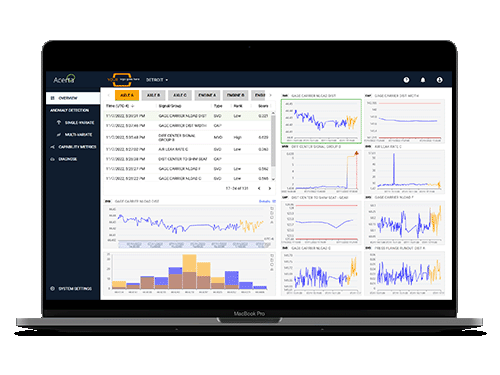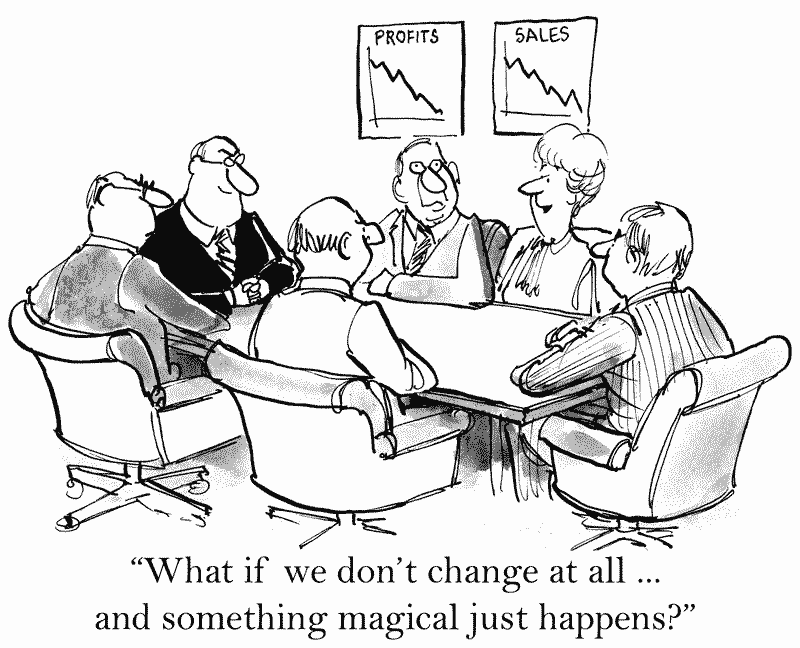
5 obstacles to digital transformation in automotive manufacturing
Introduction

Digital transformation is well underway in manufacturing in other industries. According to the International Data Corporation (IDC) Worldwide Digital Transformation Spending Guide, global spending on digital transformation in businesses is expected to reach $2.8 trillion in 2025, which is more than double the amount allocated in 2020.
The physical and structural signs of change towards digital transformation in automotive manufacturing can be obvious. Newly built facilities house complex robotics that move parts along manufacturing lines quickly and precisely. Line operators are more likely to press buttons and handle digital interfaces than hold wrenches and handle physical parts.
To really drive the point home, take a trip back in time to 2004 and observe this Chrysler Transmission plant in Kokomo.
Fast forward just 15 years, and observe the vast difference in the transmission manufacturing environment from this video of SEAT transmission production in Barcelona (2019).
The physical/digital transformation is clearly evident when we compare these two videos and you might even find yourself marveling at how technology has changed in such a short period of time. But, what you might not focus on when comparing the two videos are the organizational changes and decisions it takes to make this digital transformation a reality.
There is a strong tendency when thinking about digital transformation in manufacturing to focus on the tangible, visible effects of the transformation – things like robotics, IIoT, and even software tools. But, like any large change, there are often underlying layers that enable these surface-level changes.
A digital transformation has many hidden facets
Imagine a person trying to improve their health and fitness. Everyone knows that to be in better shape, they must exercise and eat moderate amounts of nutrient-dense food yet few people actually do these things and even fewer people are able to maintain healthy behaviors for the long term.
To get in better physical shape, there is much more that needs to be done to support a change in habits. Here are some of the roadblocks that the person might face. They:
- Lack the will and discipline to set targets and stick to goals,
- Find it hard to prioritize other things over their health,
- Lack the resources to create a realistic plan for success,
- Don’t have a coaches or reliable sources of information about healthy habits,
- Don’t know what foods are healthy and how to prepare them, or how to exercise effectively without getting injured,
- Don’t want to shift their familiar daily routine to accommodate time for exercise, food preparation, and proper sleep,
- Don’t say “no” to family and friends when it comes to unhealthy foods or activities.
Each of these roadblocks cannot be solved easily or overnight, especially when the person has a family, a job, a social life, and other hobbies that they are already putting energy and effort towards. A comparison can be drawn to an automotive manufacturing facility trying to undergo a digital transformation. Digitization efforts must be carried out while the facility is simultaneously still focusing on producing high-quality vehicle parts, meeting financial targets, and supporting all normal operations of the business.
In automotive manufacturing, there are similar roadblocks that can prevent digital transformations from occurring. If these issues are not resolved, they can lead to transformation efforts that end up being far more inefficient and costly than anticipated.
1. No corporate buy-in for digital transformation activities
A 2022 survey reported that 22% of manufacturing leaders cited that “lack of executive support” was a barrier to digital transformation at their company. And, 38% of respondents said that “no clear path” was a barrier. These numbers signify a problem when it comes to leadership in digital transformation.
Often, corporate structures move slowly when it comes to change. This can be due to many factors, such as:
- Departmental and informational silos,
- A lack of effective communication throughout the organization,
- Poorly designed decision-making processes,
- Internal politics,
- Executive personalities that resist change.
Automotive manufacturing is by nature a somewhat slower-moving business. New cars take a long time to research, design, prototype, test, and manufacture when compared to something like clothing, furniture, or small household objects. Some executives may be unused to the pace of change now demanded by the market, and not have a blueprint for how to undergo these large-scale changes.
In order for digital transformation to even begin or to be successful, corporate and upper level executives need to be on the same page when it comes to long-term goals about digitization, and lay out a clear path to reach them.
2. Lack of qualified people to execute the digital transformation
Even if a clear plan is laid out, it will still fail without the right people to execute it. Upper-level executives may need to re-think their talent pool and how they can attract digital-savvy employees that can confidently lead their organizations through a digital transformation. They may even need to reorganize leadership roles at the very top to accommodate new priorities.
New roles or even departments will need to be added. Some companies have an entire dedicated department working on digital transformation. Others have smaller teams working within existing departments with expertise on various aspects of data collection and analysis, data security, robotics, and software integration. Hiring managers and HR departments need to get creative when it comes to attracting and selecting talent, as these new roles may come with different types of experience and different backgrounds that are not familiar to traditional manufacturing.

In addition to strong and competent internal teams, it is always a good idea to have trusted coaches, advisors, or consulting teams available. Executives should add trusted contacts in their networks who have overseen or assisted with digital transformations in automotive manufacturing before.
Outside help isn’t only for top-level executives at the strategic level: a digital transformation means that the breadth of the entire business is expanding. In addition to all the traditional tools of manufacturing, software and tech will become a larger part, which opens the door for new vendor relationships and partnerships. Choosing these relationships wisely and finding vendors with a customer-focused long-term perspective will ensure that operational teams are being well-advised on the tech and software they choose, and make their transitions easier.
3. A lack of understanding about the costs and ROI of digital transformation
Digital transformation in automotive manufacturing is a large and costly endeavor, there is no way around it. Investments need to be made wisely and there are many costs to consider, such as:
- Costs of research, strategy, and building a plan or roadmap,
- Costs to locate, vet, and secure new vendors and partnerships,
- Cost to pilot or trial new tech or processes,
- Additional labour and employee costs,
- The cost of installation, onboarding, training, and ramp-up time for new tools,
- The actual costs of new tools or tech,
- Unforeseen costs if technical issues.
These costs must be measured against the increased efficiency and revenue that can result from new digital transformation initiatives, and an informed plan must be made about how to roll out new tools and tech in the organization. By allocating the budget in an incremental manner over a number of years, costs can be absorbed by the organization without drastically impacting revenue or risking the health of the facility.
Allocating costs must be done in a measured way. New technology and process changes must be mapped out in a digital transformation plan or roadmap. Part of this roadmap must include an order of operations for adding new technology and making changes to the manufacturing environment. It is extremely important to implement new technology in a strategic order to ensure that each new improvement builds on the last with few gaps.
For example, if a facility does not have the network infrastructure in place to handle increased traffic, adding software that demands a high degree of data transfer right away will cause more costly problems than it will solve. Of course, the network must be upgraded first. While this may seem like an obvious problem to solve, things can get more complex when there are multiple new technologies to be added. Making investments out of order can increase costs when urgent solutions are needed for unplanned implementation problems.
Another example of how the digital transformation roadmap can affect costs directly is by considering which initiatives will result in the fastest ROI. Reaping financial benefits sooner in the digital transformation journey helps to mitigate the costs earlier.
We recommend that adding LinePulse, our predictive quality solution, is a good preliminary step in your digital transformation journey. LinePulse can be implemented on any manufacturing devices that provide data and can start adding value by increasing quality and first time through almost immediately after deployment and setup.

4. A lack of scalability for digital transformation initiatives
There are a few ways that manufacturers inhibit their ability to scale and all must be considered when optimizing the ROI from digital transformation investments.
Scaling manufacturing tech over time
The digital transformation roadmap must not only prepare a manufacturing facility for the additional technologies to be added that are available today, but it must also consider how technologies will evolve. If a plan is made for the next 10 years and executed, can it be flexible enough to consider that technology may have advanced by year 9?
One example of a problem we see is that some early adopters in manufacturing have built their own proprietary software to handle data analysis, perform custom functions, or to connect disparate parts of the manufacturing tech ecosystem. This software can become outdated quickly, and often they fail to prepare the facility for even more powerful software of the future. Since they are so custom-built, it can be difficult to transition out of them, especially when considerable internal resources have been put towards building them.
Another reason that we recommend a solution like LinePulse is that it can be implemented early in your digital transformation journey and can scale with the facility as new technology is added. New manufacturing machines or robotics providing new sensor output can be added to LinePulse easily, and it will only enrich the data and provide more thorough analysis as time goes on.
Scaling manufacturing tech across facilities
Another problem we see in automotive manufacturing is the ability to scale tools across different sites. Often, a single site will engage in a proof-of-concept project with a new tool or piece of software. During their onboarding and implementation, they customize the tool or piece of equipment to fit their specific needs, and Corporate might not have deep insight into how the implementation was carried out.
Perhaps this proof-of-concept was a huge success, and now Corporate wants to roll the new tool out to more sites. A few problems can occur here that may cause unnecessary time or money to solve:
- The tool itself might not be built to scale across multiple sites or collect data from multiple installations.
- The implementation in the single facility might be too custom to use as a direct model for other sites.
- The single implementation might not have been vetted thoroughly by Corporate for universal use across sites.
Manufacturing companies can avoid these problems by ensuring that Corporate is well aware of any pilot projects, and is involved from the beginning. They must ensure that if a tool is successful in one site, it will be relatively easy and straightforward to integrate at other sites, and is aligned with the rest of the corporation’s digital transformation roadmap.
5. A resistance to change within the automotive manufacturing facility
Forbes has reported that over 84% of digital transformation efforts fail, namely due to lack of behavioral change within the organization.
Change management is not a new concept. Organizations and academic institutions have put great amounts of research towards finding better ways to navigate change. Businesses at their most basic level are a collection of people working together to achieve revenue operations. Since individual people at their most basic psychological level are naturally resistant to change, it makes sense why this is such a barrier for business success in general.

With digital transformation, the changes we are talking about are extremely rapid and dramatic. Relinquishing control of processes and decision-making to robotics and automation is radical for human workers to accept and learn to work with.
In addition to setting a clear strategy and aligning senior and mid-level management on the way forward, careful effort must be put into rolling out changes to employees at all levels of an organization. Major mistakes that some organizations make are:
- Failing to establish trust with employees,
- Not asking for employee feedback when planning major changes,
- Not communicating the rationale or benefits behind changes to employees,
- Not addressing employee concerns or fears about upcoming changes,
- Not acquiring feedback on new technological implementations or process rollouts.
An organization with a healthy culture will find that there is less overall resistance to change than one whose employees are already wary and suspicious of management. Unfortunately, there is no quick fix for this. However, the importance of allocating time and resources to managing the adoption of new tools and process, and supporting the employees as they transition, cannot be underestimated.
The success of using new tools and technologies can only be as high as the amount of effort and persistence that teams put towards learning about them and applying them. A poor rollout of a piece of tech or a process change can make the difference between a costly waste of an investment, or a drastic improvement in efficiency, revenue, and morale.
A successful digital transformation in automotive manufacturing
To undergo a successful digital transformation in automotive manufacturing, these five obstacles must be considered and overcome. With the right leadership and smart decision-making, automotive manufacturers can stay competitive and relevant in today’s steadily advancing environment.

